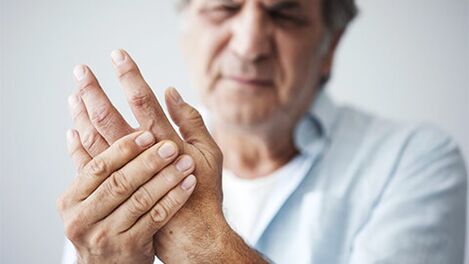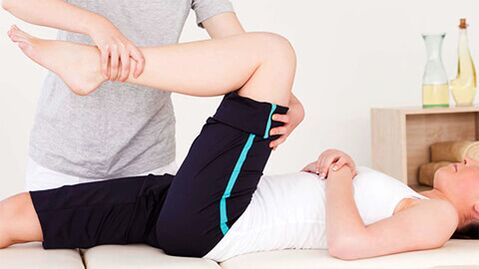
Arthrosis is a whole set of deep dystrophic diseases of articular apparatus with different etiologies, but a similar clinical appearance of pathological changes.Hyaline junction of the joint, then the tissue of the drunken bone, the joint capsule and the ligamentous apparatus, are exposed to destruction and deformation.The disease is chronic progressive and without proper treatment can significantly limit the patient's motor activity.
Diagnosis and treatment of pathology is engaged in an arthrologist, rheumatologist, surgeon, orthopedic.
General information
Arthrosis is diagnosed in approximately 1/5 of the planet's population, but the disease is more characteristic of the elderly.This proves the statistics of its spread between different ages:
- Youth up to 40 years-not more than 6-7 %;
- Mature faces after 45 years at 20-25%;
- After 70 years - up to 80%.
The disease affects the tissues that are under a constant load: small joints of the hands and plus of legs, hip and knee joints, areas in the cervical parts and thoracic spine, slightly less of the ankle and shoulder joints.
Exactly! Loss of hand interconnection in women occurs 10 times more often than in men.
In many western countries, the term "arthrosis" is not used, replacing it with the concept of "arthritis".Such a replacement is quite justified, as inflammatory processes in most cases precede arthrosis or accompany it.In internal medicine, the terms "arthrosis" and "arthritis" essentially mean the same disease, but with different etiologies of the process.Moreover, the concepts of osteoarthritis, osteoarthritis, deformity of osteoarthrosis are used to designate pathology.
Exactly! The difference between arthritis and arthritis lies in the cause of the disease.In the first case, these are inflammatory processes (suffixes -implies inflammation), in the second -metabolic disorders (protein, minerals).
Mechanism of development and causes of arthrosis
The main cause of arthrosis is a violation of balance in the processes of anabolism and catabolism of the cartilage and bone tissue.If synthesis processes prevail normally, then during arthrosis changes, destruction processes go faster.As a result, rapid aging and degeneration of tissue structures are observed.They begin to collapse first at the cellular level, then in the tone.The first destructive changes appear:
- clouding of cartilage;
- Superficial storagiesss;
- Micrococks and tears;
- Focal and general thinning of the cartilage layer.
Cartilage loses elasticity and natural density and is no longer able to serve as a shock absorber during movements.Mutual correspondence of the shape of the common surfaces is disturbed, which leads to deformation of the connection.This exacerbates the development of pathological changes and causes a number of irreversible processes.In exchange for lost cartilage, bone tissue begins to increase with the formation of rivets and results, which fetter movements and then can lead to severe patient disability.
Reasons for this scenario:
- Violations of mineral metabolism are able to lead to gout changes in joints, osteoporosis, etc.
- The disadvantage of tissue nutrition is venous stagnation and poor microcirculation slows blood supply and lymphatic drainage.The mineral composition of the bone is depleted, it becomes osteopor and loses the ability to self -centered.The phenomenon is characteristic of the lack of movement, with vascular pathology, hormonal failures.
- Inflammatory processes - a consequence of acute infectious diseases, body hypothermia, impaired hormonal background.
- Autoimmune reactions are chronic seals of inflammation, nervous stress, endocrine pathologies and other causes can provoke the body's immune system aggression against its cells, including articular tissue.The most common autoimmune lesions with rheumatoid arthritis, scleroderma and red lupus.
- Increasing the joint coating - a discrepancies between functionality and determined load slows down synthesis processes and accelerates destruction.The phenomenon is characteristic of athletes, dancers, overweight people, and for all those who are engaged in heavy physical work or associated with long static loads (foot work).
- Injuries - bruises, displacements, fractures, penetrating wounds, tears - violate tissue structure and give impetus to the onset of deformation.
- Genetically defined pathologies - connective tissue dysplasia, a violation of collagen synthesis initially form a unstable, low functioning.
Some reasons are echoed closely with each other and form a complex pathological complex.
Attention! Hormonal deviations play a particularly important role in violations of bone tissue metabolism.A failure in the thyroid gland, menopause, intake of contraceptives, corticosteroids - all this is a direct way to osteoporic changes and arthrose in the skeleton.
Classification of changes
In the systematics of arthrosis, some determining criteria are used: Causes and etiology, localization, coverage zone.
From etiology:
- Primary arthrosis - develop independently, with damage to completely healthy joints, without the participation of previous pathologies;
- Secondary ones-are formed against the backdrop of a disease (gout, psoriasis, rheumatism), as well as in the presence of existing articular deformities or damage.
According to the degree of coverage:
- Local forms with damage to a limited number of nodes: monoarthrosis-1 union, oligoarthritis-2-3;
- Generalized forms are different types of polyarthrosis, when 3 large structures and more are included in the pathological process.
According to the localization of the process, the arthrosis names of each union are given separately:
- Coxarthrosis - disable hip connection;
- Spondylarthrosis - affects the intervertebral discs, mainly cervix, chest and lumbar;
- Gonarthrosis - with damaged knee joint work;one of the most common species;
- Cruzartrosis - with incorporation in the pathological process of the ankle.
Arthrosis can be quickly or slowly progressive, offset or decompensated.
The main symptoms and signs
Arthrosis is a complex disease.Conventional, it can be divided into some united pathologies:
- Condritis and chondrosis - inflammatory and degenerative lesions of cartilage tissue;
- Osteoporosis is also osteoporosis - a pathological process in bone structures;
- synovitis - inclusion of the lining shell of the joint capsule;
- Bursitis - general inflammation of the common bag;
- Reactive soft tissue damage to the adjacent area - affects muscles, ligaments, fibers.

Depending on the stage, scale and shape, they are observed simultaneously or selectively.Given this, a complex of symptomatic changes is formed.Among them:
- Pokhrutzhazing is a symptom of a violation of mineral metabolism and the first sign of the disease.Can occur at any age.
- Shares - manifested intensively in the morning.Short -term is and can be expressed by the effect of joining blockage.
- Limiting mobility - reduction of amplitude of movements in performing active or passive actions.
- The pain has a different manifestation, ranging from unpleasant and painful, which, after intense loads, acquires a background character and ends with acute sharp movements-when performs.The so -called "onset pains" are particularly characteristic, which manifest after a long rest period and last until the knot is completely developed.
- Softness - with inflammation of soft tissue, synovitis, bursitis.
- Deformation - is observed with complete degeneration of cartilage and lack of a factor that adopts a friend.
Exactly! Bushara and Geberden joints are a characteristic sign of deformation of the arthrosis of the hands.They are bone growth with osteophyte processes.
The stages and degree of arthrosis
In terms of the intensity of arthrosis changes, 4 stages of the disease are distinguished:
- Phase 1 - with a slight flow of cartilage cartilage (violation of structure and functionality in collagen fibers).On X -Ray, photography is practically not visible.
- Stage 2 - the singing of the cartilage fabric in the union lumen is up to 50%.Is the case covered with cracks, a slight pain appears in the area of the damaged complex.Osteophytic complexes appear on X -Ray;The joint gap reduces its size slightly.
- Stage 3 - the cartilage lesion almost reaches the base of the bone, the joint gap is significantly reduced.
- 4 stages - jumping is completely damaged, which leads to partial or complete degeneration of synovial fluid, bone tissue erosion for each other and deformation of the complex.In some areas, sclerosis changes develop.The extreme manifestation of arthrosis is the fusion of articular tissue with ossification of structures and a complete loss of mobility.
In some sources, stages 1 and 2 is combined in one.
With the progress of the symptoms, a person's motor activity suffers.Given the functional performance violations of the union, 4 degrees of potential development of pathology are distinguished:
- 0 scale - mobility and performance are fully stored;
- 1 degree - the patient retains the ability to self -serve and manifest social activity, but is unable to engage in work activity;
- 2 degrees - the difficulties in the manifestation of social activity are added to a violation of work activity;
- 3 degrees - all types of activities are limited or completely impossible: work, social and self -service;The patient needs constant care.
What are the possible complications
By tightening with treatment, you can provoke a number of unpleasant consequences:
- Continuous pain syndrome;
- madness;
- vertebrates (with spondillartrosis);
- Common deformation pronounced;
- Complete immobility with the oscillation of structures.
What does the survey procedure include
For the diagnosis of arthrosis, a medical examination with the collection of an anamnesis is sufficient.To determine the degree of damage, an instrumental examination is performed.The main ways to get a clear view of the disease:
- Radiography;
- Ct, MRI;
- Ultrasonography;
- Skintigraphy;
- Diagnostic arthroscopy with biopsy of cartilage tissue and synovial fluid.
In an acute inflammatory process, the doctor describes additional tests: a general blood test, rheumine, biochemistry (glucose level, protein compounds, electrolytes).
Treatment
It is impossible to completely eliminate the disease.Timely treatment of arthritis allows you to maintain fusion functionality, normal engine activity and prevent pain.To rule out complications, it must begin in the first phase.
Drug therapy Include:
- anti -inflammatory drugs, mainly NSAIDs;
- intraoidal steroid blocks of pain and inflammation (with pronounced synovit, bursitis);
- Proteinolysis inhibitors - slow down and suspend the process of bone and cartilage destruction;
- Antispasmodics - prevent muscle cramps;
- angioprotectors and medicines to improve blood microcyloration in the affected tissues;
- chondroprotectors;
- synthetic substitutes for synovial fluid;
- Compositions of vitamin and minerals.

A complex of physiotherapy described in parallel to increase the effect of medication.Main physiotherapy:
- magnetotherapy;
- electrophoresis;
- UHF;
- mud;
- baths;
- massage;
- Exercise therapy and kinesiotherapy using special simulators.
Surgery - the only way to treat in later stages, when the cartilage tissue is completely destroyed.The following solutions to the problem are possible:
- Endoscopy - with a partial or complete replacement of the joint from an artificial analog;
- Arthroscopy - a minimally invasive operation to remove osteophytes or partial replacement of cartilage;
- Arthrodesis - closing the joint and adjusting it in the most appropriate position;Common surfaces connected without moving increases over time.
Predict
Arthrosis does not threaten the patient's life, but the lack of treatment can significantly limit freedom of movement and exacerbate the quality of life.Timely and competent therapy in the early stages can restore joining in a healthy state.In other cases, only a slowdown in the degeneration process is possible with the help of conservative treatment and compensation for lost functions due to prosthetics.
Prevention of the disease
Therefore, a complete recovery is almost impossible, prevention should be paid special attention.The main requirement is a healthy lifestyle and a complete treatment of inflammatory processes:
- Do not allow hypothermia and treat infectious diseases in a timely manner;
- Avoid physical overload and long static loads;
- maintain normal body weight;
- Adapted to the right diet-the balanced composition of vitamins and minerals is very important for the health of the muscular-Skeletal system;
- Completely (if possible, until complete recovery), treat any damage to the joints;
- Practice systematic physical exercises to stimulate blood circulation (bike, hiking, light jogging, Scandinavian walking).
If you are in danger (elderly age, poor inheritance, physical overload) make sure you undergo regular radiographic examination.






















